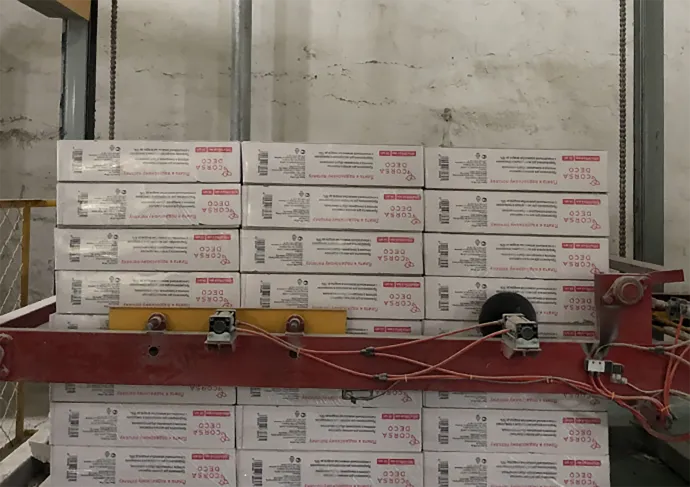Dec . 12, 2024 22:08 Back to list
drop ceiling t bar
Understanding Drop Ceiling T-Bars Applications, Advantages, and Installation
In modern construction and interior design, drop ceilings have become a popular choice for both commercial and residential spaces. One pivotal element of these ceilings is the T-bar, a critical structural component that forms the framework for the ceiling tiles. This article delves into the nuances of drop ceiling T-bars, covering their applications, advantages, and installation process.
What is a Drop Ceiling?
A drop ceiling, also known as a suspended ceiling, consists of a grid system that hangs below the original ceiling structure. This system not only conceals plumbing, wiring, and HVAC ducts but also offers design flexibility, sound insulation, and aesthetic appeal. The T-bar forms a critical part of this grid system, creating a grid pattern that supports the ceiling tiles.
The Role of T-Bars in Drop Ceilings
T-bars, typically made of lightweight metal or vinyl, are named for their T-shaped cross-section. These bars are installed perpendicularly to the main runners of the grid and provide the necessary support for the ceiling tiles. They come in various sizes, but the most common dimensions for residential and commercial applications are 12 inches and 24 inches.
The T-bar grid system allows for easy access to the space above the ceiling for maintenance or installation of additional utilities. Moreover, since the tiles are removable, the grid simplifies repairs and upgrades.
Applications of Drop Ceiling T-Bars
Drop ceiling T-bars are versatile and can be found in numerous applications.
1. Commercial Spaces In offices, retail locations, and healthcare facilities, drop ceilings provide a clean and professional look while accommodating acoustic materials that enhance sound quality and privacy. 2. Educational Institutions Classrooms and lecture halls utilize drop ceilings to improve acoustics and visual appeal while allowing for easy installation of lighting and climate control systems.
3. Residential Use Homeowners often choose drop ceilings for basements, laundry rooms, or workshops, balancing functionality with aesthetic elements. The ability to choose from various tile designs allows for personalized interior decor.
4. Industrial Settings With the need for energy efficiency and insulation, industrial spaces often benefit from the incorporation of T-bars to support the installation of energy-efficient materials.
Advantages of Drop Ceiling T-Bars
1. Cost-Effective Compared to traditional ceilings, drop ceilings with T-bars are often less expensive to install and maintain. Their modular nature allows for quick replacements without extensive renovations.
drop ceiling t bar

3. Acoustic Benefits Many tiles are designed to absorb sound, making them ideal for spaces requiring quiet environments, such as offices or recording studios.
4. Design Flexibility With a wide range of tile designs and colors, T-bars allow for creative ceiling designs that can match or enhance the overall aesthetic of the space.
5. Energy Efficiency Some drop ceilings come with insulation properties, helping to regulate indoor temperatures and, ultimately, reducing energy costs.
Installation of Drop Ceiling T-Bars
Installing drop ceiling T-bars involves several steps, but it can be accomplished as a DIY project with some basic tools and materials
1. Gather Materials Acquire T-bars, ceiling tiles, a laser level, and necessary tools like a utility knife and measuring tape.
2. Plan the Layout Determine the height of the ceiling and the placement of the grid. Use a laser level to mark the desired height around the perimeter of the room.
3. Install Main Runners Attach the main T-bars along the perimeter marks. Ensure they are level for a flush appearance.
4. Add Cross T-Bars Install the cross T-bars at regular intervals, depending on the size of the tiles being used.
5. Insert Ceiling Tiles Finally, simply lay the ceiling tiles into the grid, ensuring they fit snugly and securely.
Conclusion
Drop ceiling T-bars are essential components of suspended ceilings, offering functionality, accessibility, and design versatility. Their applications span various sectors, from commercial to residential, demonstrating their importance in modern construction and design. Whether you’re considering a drop ceiling for practical reasons or purely for aesthetics, understanding the role of T-bars can greatly enhance your project's success.
-
Durable Ceiling T Grid Systems | Easy InstallationNewsAug.29,2025
-
PVC Gypsum Ceiling: Durable, Laminated Tiles for Modern SpacesNewsAug.28,2025
-
Pvc Gypsum Ceiling Is DurableNewsAug.21,2025
-
Mineral Fiber Board Is DurableNewsAug.21,2025
-
Ceiling Tile Clip Reusable DesignNewsAug.21,2025
-
Ceiling T Grid Modular DesignNewsAug.21,2025







